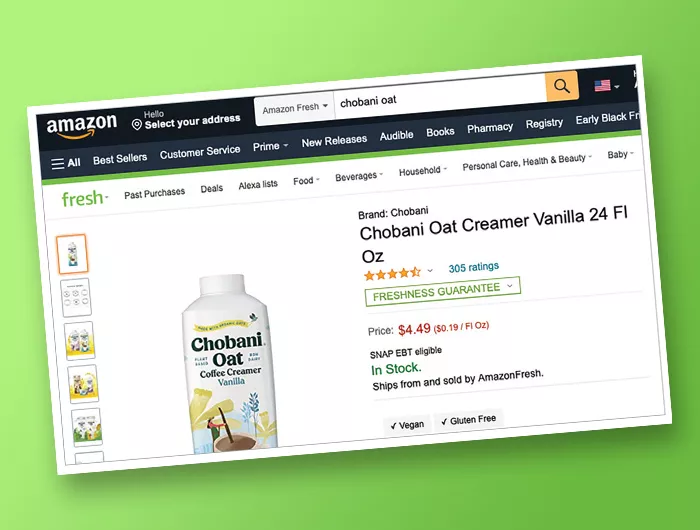Peter's Memo: Food shopping 2.0

Food shopping isn’t what it used to be. Today, you can grab your phone and order groceries or takeout online from the comfort of your couch.
Even before Covid, the marketplace was changing. And as more food sales move online, Nutrition Action’s publisher (the Center for Science in the Public Interest) continues to push government and industry to keep up.
Restaurant apps
It’s the law. If a restaurant chain has 20 or more locations, its menu must list calories and let customers know that additional nutrition info (like for sugar and sodium) is available from the company. That goes for online menus, too, says the Food and Drug Administration.
Yet many menus on third-party ordering apps like DoorDash, Seamless, and Uber Eats don’t include calorie counts. When we checked Grubhub, for example, menus for Panera and McDonald’s listed calories...but menus for California Pizza Kitchen, Sweetgreen, Denny’s, and others didn’t.
That’s why CSPI is urging the FDA to make clear to companies that labeling is required on online menus, including menus on third-party apps.
Online grocery
It’s hard to avoid the onslaught of marketing for junk. Shopping for whole wheat bread? You’ll likely have to wade through promos for white bread or cinnamon buns in the virtual bakery “aisle.”
Meanwhile, the facts you need from food labels are often hard to find, in tiny type, incomplete, out of date...or missing entirely. Even leading retailers like Amazon Fresh don’t have Nutrition Facts posted for all of their items.
The problem: Decades-old labeling laws don’t always apply to foods that are sold online. That’s why we’re urging lawmakers to pass the Food Labeling Modernization Act. The bill, which was introduced in August, would overhaul labeling laws, including requiring Nutrition Facts, ingredients, and allergen information for groceries sold online.
Online SNAP
In recent years, the U.S. Department of Agriculture has made it easier for people who are facing financial hardship to buy groceries by allowing online retailers to accept Supplemental Nutrition Assistance Program (SNAP) benefits.
But that effort has failed to help many households because not all food retailers participate. What’s more, delivery is limited in rural areas, and people aren’t allowed to use SNAP benefits to pay delivery and other service fees.
That’s why CSPI is urging the USDA to make it easier for retailers to accept SNAP online and asking policymakers and retailers to find ways to expand delivery areas and reduce service fees for SNAP participants.
We’re also pressing policymakers and retailers to set guidelines that would encourage all online shoppers to buy healthy foods by curbing ads and promotions for junk.
We’ll keep you posted on our progress.
Peter G. Lurie, MD, MPH, President
Center for Science in the Public Interest
Tags
Topics

